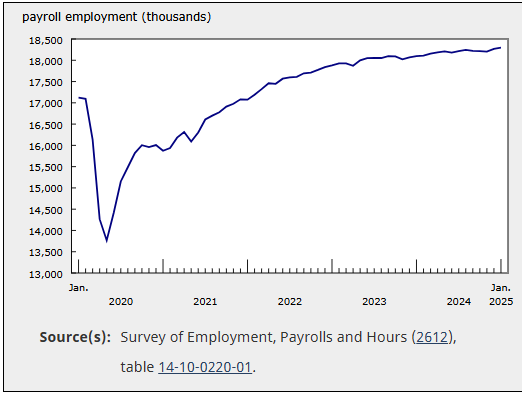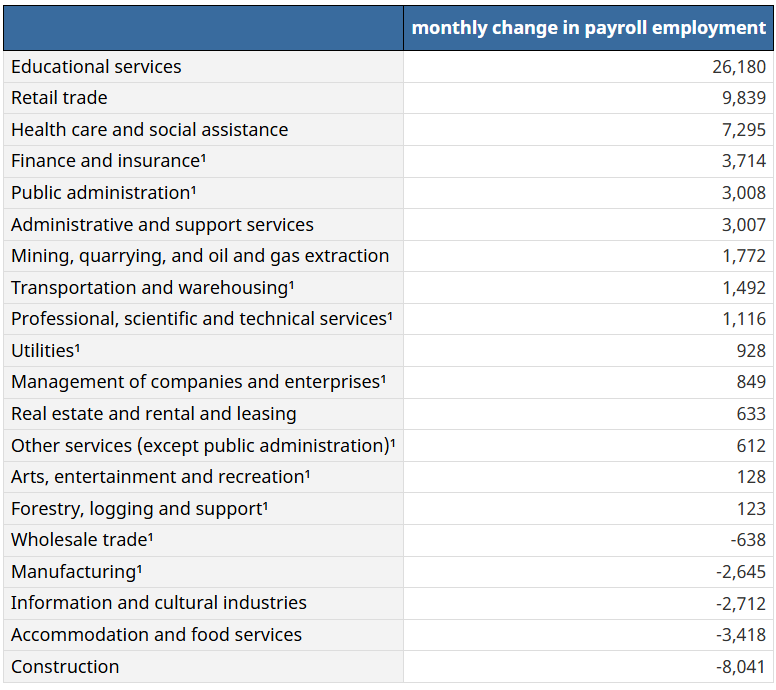
Despite increase, over half a million job vacancies remain across country

Canada’s payroll employment numbers slightly increased in January, but the country continues to face significant labour shortages, according to Statistics Canada (StatCan).
The number stood at 182.947 million in the first month of 2025, up 26,800 (+0.1%) from the previous months.
This followed an increase of 66,400 (+0.4%) in December 2024.
On a year-over-year basis, payroll employment was up 198,900 (+1.1%) in January 2025.

Despite the gain, there were still 526,200 job vacancies in the country, little changed from December 2024. On a year-over-year basis, job vacancies were down by 136,700 (-20.6%).
The job vacancy rate—which corresponds to the number of vacant positions as a proportion of total labour demand—was 2.9%, down 0.1 percentage points from December (3.0%). Year over year, it was down by 0.8 percentage points.
“There were 2.8 unemployed persons for every job vacancy in January, unchanged from December, but up from 1.9 in January 2024,” said StatCan. “The year-over-year increase in the unemployment-to-job vacancy ratio in January 2025 reflects a decrease in vacancies (-135,200; -20.5%, excluding territories), and an increase in the number of unemployed persons (+250,500; +20.2%, according to the Labour Force Survey).”
Canada’s unemployment rate could surge in the face of US tariffs, according to one expert from TD Bank.
Educational services recorded the biggest increase among all sectors, with retail trade and healthcare and social assistance coming in at second and third, according to StatCan.
Previously, the government of Canada announced it would be investing $14.3 million across four organizations through the Foreign Credential Recognition Program (FCRP) to relieve pressure on healthcare workers and address healthcare labour shortages.
The gains, however, were offset by payroll employment number deductions in construction, accommodation and food services, information and cultural industries and manufacturing, according to StatCan.

Meanwhile, four sectors recorded a decline in job vacancies:
Alberta was the lone province to record a significant change in the number of job vacancies in January 2025, with the data falling by 8,600 (-11.9%) to 63,400 in January. That more than offset the increase recorded in December 2024 (+5,600; +8.5%), according to StatCan.
“Year over year, the job vacancy rate was down in seven provinces in January, with the largest decreases in Newfoundland and Labrador (-1.5 percentage points to 2.5%), New Brunswick (-1.0 percentage points to 2.4%), and British Columbia (-1.0 percentage points to 3.5%). Meanwhile, the job vacancy rate was little changed in Saskatchewan (3.5%) and Nova Scotia (2.9%),” said StatCan.
“In January, the job vacancy rate was highest in Saskatchewan (3.5%) and British Columbia (3.5%), while it was at its lowest in New Brunswick (2.4%). Saskatchewan had the lowest unemployment-to-job vacancy ratio (1.9), followed by Quebec (2.0) and British Columbia (2.2).”
Overall, 77% of Canadian companies report significant challenges in finding qualified workers — a slight improvement from 80% in 2024, according to a previous report from ManpowerGroup.